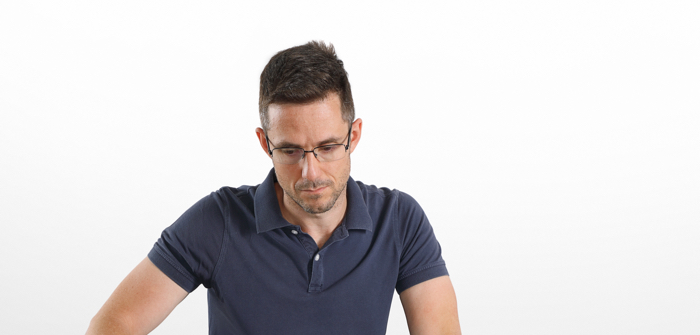What career did you want growing up?
In my early childhood I dreamed of a future as a cartoonist, but that changed when my father (a retired mechanic with an incredible passion for the restoration of motorbikes) bought me a scooter equipped with a 50cc two-stroke engine. Something clicked in my mind that day. How does this engine work? What to do if I want to repair it? How can I improve its performance? Those questions fueled my willingness to learn as much as I could about engines. It really motivated me to obtain my bachelor’s degree and still keeps me focused on achieving my goals in everyday working activities.
What was your career path to get to where you are now?
My first job was in 2005. I became a trainee at Oral Engineering under the lead of former Scuderia Ferrari engineer Mauro Forghieri as part of a thesis for my bachelor’s degree. After I completed the degree in 2006, I was hired by Oral as a motorbike chassis designer and immediately got involved in one of the very biggest challenges for the company at that time: designing a MotoGP prototype from scratch for a German customer. We succeeded in completing the project within the year and by the end of 2008 I had joined the engine design department. From that day on, I never looked back.
If you had to choose one career highlight, what would it be?
Undoubtedly, the day I decided to leave my previous company to join Maserati. It was 2014 and I was very satisfied with how my career had developed so far. I had a 360° experience of developing and testing small batch prototype parts for racing applications, but I felt the urge to join a larger company to understand how to manage projects oriented around mass production.
Fortunately, Maserati was hiring at that time and granted me an entry position in the design department. I took the chance and started this marvelous adventure I am still experiencing today.
What are the best and worst aspects of your job?
I could tell you how difficult the concept selection can be, how frustrating an issue can become when it impacts the production schedule, or how satisfying it is when you gain approval for the development of a new engine, but honestly, there are no good or bad aspects in any job. Everything depends on yourself and your mood when you get in your car to go to work.
If you lose your motivation or if you have a negative outlook, then everything looks bad (not only at work). On the other hand, if you are strong minded and focused on your tasks then everything runs smoother and the people around you benefit.
Please describe what a typical day looks like for you.
A typical day for me is strongly linked to the development phase. In the early stages, my team and I invest a lot of effort in supervising the design and virtual validation activities of all the components. Then we focus on the suppliers for mass production. Once that’s done, we switch to manufacturing to check if the production line is ready to begin the assembly process. From that point onward, it’s all about work on the dynamometer and vehicle validation.
Throughout the whole development process we keep an eye on any emerging issues. Once everything is sorted and we reach the start of engine production milestone, we can start over on the next engine in line. It might sound repetitive, but I can assure you I’ve never had a day similar to the previous one.
Do legislators help or hinder your work?
We aim for the ‘technical best’ but we also have to work with a multitude of boundaries to achieve a sort of equilibrium between performance, driveability, environmental impact, quality and regulatory requirements. Taking this into account, I think we can say legislators give us an extra push to improve our technology every day and to be compliant with the latest legislation.
What was your first car and What do you drive now?
Since I got my license, I’ve mostly had secondhand cars. I even had the chance to borrow a Lancia Fulvia from a friend of mine for a couple of summers and it was a very good experience. Now, working for Maserati, I am pleased to drive a company car. It’s not a Maserati, unfortunately, but I plan to take some driving courses to improve my skills and to test the Nettuno engine in the MC20.
What is the biggest challenge for Maserati at the moment?
From my position, I believe we must avoid any discontinuation of the Maserati DNA. The customer must get the same feelings from our future cars as they do from today’s in terms of performance quality and being fun to drive.
Are there any other OEMs that you have particular engineering respect for?
The respect I have is not for other OEMs but for all the people who work to their best level every day to ensure that customers are able to get a solid product that is affordable, safe, reliable and fun to drive as well as one that respects the environment in which we live.


